#murder in heliopolis
Explore tagged Tumblr posts
Note
Happy STS!
What was your favorite part about creating the world for Heliopolis?
Happy STS, and thanks for the ask! ^^
That's a great Q. Murder in Heliopolis was really, really influenced and inspired by the solarpunk aesthetic. Just search solarpunk on Pinterest and you'll see what I mean. It's beautiful, and very green, and very different from what we're used to especially in cities, so creating a world where that was the norm was really fun.
As I actually started learning about the solarpunk movement, though, I realized that it was less about fancy green buildings that would probably be really difficult to sustain, and more about living an eco-friendly and sustainable life, even if it's not too glamorous.
Now, a lot of what I try to do in my worldbuilding is marry the two together, to create a world dripping with solarpunk aesthetic and practicality. It's a big challenge, and I'm probably not doing as well as I should be, but it's very fun.
>> Murder in Heliopolis wip page for anyone who'd like to know more!
7 notes
·
View notes
Note
Who would you say are your "main" gods? not necessarily major or minor, just who you focus on the most

I'd say the Netjer I focus on the most are; Anubis, Nephthys, Isis, Horus, Osiris, Set, Thoth, Ra, Bast, Khonsu, Hathor/Sekhmet, Meretseger, and Pakhet. That may change as more behind the scenes things go, but that's my present answer at least.
And as a bonus, have a set of wee character synopses for the gang under the cut 👀
Anubis (cis, he/him, pansexual, faceclaim is Keiynan Lonsdale): While he may only be prince of the Duat, he's every bit a goth short king. He inherited Nephthys' quiet and pragmatic character, as well as Osiris' charm and love for nature- animals in particular, dogs AND cats. (And everything else. Ammit was his idea.) Anubis is a soft spoken and fairly solitary individual, preferring to spend his leisurely moments on his own or with very limited company. He's deceptively shy and timid despite his royal standing, not to mention considerably more mellow than most of his family tree. He takes his duties in the Hall of Two Truths very seriously, making sure the scales are well tended and helping the souls of the dead through the hall.
Bast (cis, she/her, bisexual, faceclaim is Zazie Beetz): It comes as no surprise that the domestic cat was specifically crafted for Bast by her uncles Ptah and Khnum, the beasts’ temperament being closely derived from the goddess’ own personality. Companionable but independent, fierce but leisurely, self confident and feisty- though both are closely associated with the safety and warmth of home, they are by no means tame. The goddess herself would be the first to point out that she may be Ra’s current Eye and (in her mind) favorite, her father does not own her, however much they may try to inforce otherwise. That isn’t to say the first Pharaoh can’t be stifling at times- there was a reason she once left to wander the surrounding kingdoms- but she does her best to keep her father’s expectations and demands from dictating who she is.
Hathor/Sekhmet (cis, she/her/[Sekhmet]he, bisexual, faceclaim is Tessa Thompson): Once the Eye of Ra, now the current Queen of the Gods. Both goddesses are their own individuals yet part of the same being, similar yet different; Hathor is vain but Sekhmet is arrogant, Hathor enjoys leisure while Sekhmet would rather spar or run or lift, Hathor is very regimented in her schedule yet Sekhmet hates extensively planning ahead. One thing the two “sisters” can always agree on, however, is beer. Both are equally formidable combatants and have strong, radiant personalities, steadfastly loyal to their father and husband- though which they’d pick if forced to is yet another point of contention between the two.
Horus (cis, he/him, bisexual, faceclaim is John Boyega): Having something like the fate of a kingdom and avenging their father’s murder thrust upon someone at a young age is bound to have some long term effects. While Horus (the Younger) is a magnificent warrior with a good heart and intentions, he’s still quite lost in the role of Pharaoh, relying heavily on his advisors and queen for assistance. Some may (and do) argue that this makes the young king unfit to rule, too unsure and thus a liability, and Horus himself considers this every now and again. And yet he hasn’t destroyed the royal palace, or dried up the Nile, or allowed Heliopolis to be overtaken, or any number of other horrible possibilities. That has to count for something, right? And being able to admit that he’s gifted in leadership but by no means a genius, that it’s beneficial to have the advice of Isis and Thoth, that he himself is not the sole reason the kingdom still stands is a fair quality to have. Even if he’s otherwise overly self confident at times.
Isis (cis, she/her, pansexual, faceclaim is Danai Gurira): With no prior familiarity to the royal family, one couldn’t be faulted for assuming Horus got his egotism and verve from Osiris. But most any of the Netjer would be quick to tell you that while he certainly inherited his father’s graciousness (in some amount), the current king’s drive and intensity came from his mother Isis. Her cleverness and sagacity are well known throughout the pantheon, skillful enough with magic to compete with even Thoth- the very creator of it. And while she is by no means overly boastful, Lady Isis is very aware of her talents and carries herself with a suitable confidence.
Khonsu (nonbinary, he/they, bisexual, faceclaim is Donald Glover): Think Prince Naveen if nothing happened post his parents cutting him off- no Lawrence, no Facilier, no Tiana, no frog adventure- and he had to figure shit out himself. The only difference is Khonsu cut himself off from them- or, more specifically, his father Amun. Mut was every ounce the incredible mother she's known as, but Amun was on the polar opposite, "neglectful, patronizing, self-confidence-destroying dad" side. Along with some other factors, this culminated in a sleazy jackass of a man-child with a gambling problem, trouble making connections with others, and a massive ego to compensate for his utterly dismal self image.
Nephthys (cis, she/her, homosexual, faceclaim is Ruth Negga): By far the most subdued personality amongst her siblings, the goddess of mourning has an appropriately somber, melancholic personality. Beneath this cool outer layer, however, is a shrewd brilliance and natural talent for negotiation, a skill Nephthys employs to at least try and keep the peace. She’s perfectly happy being overlooked and underestimated (most of the time), having learned how to use this for her own gain. She is by no means a malicious, manipulative goddess, caring and compassionate by nature- but she is also not above using various types of persuasion to accomplish her goals.
Osiris (cis, he/him, bisexual, faceclaim is Idris Elba): A king in life as well as afterlife, the eldest of Nut’s children is the very definition of “benevolent ruler”; kind, gentle, compassionate, but firm and harsh when necessary. He has always been one to put the needs of others before his own, continuing his habit of overworking himself even after death. Despite his serious, stoic demeanor, the King of the Dead is still a very warm and bright individual, good-humored and amicable, doing his best to balance between professionalism and being personable with those serving him in the Hall of Two Truths- another habit carried over from his time on the throne of Heliopolis.
Pakhet (cis, she/her, homosexual, faceclaim is Sheila Atim): While not foreign in origin, Pakhet is a goddess that was alienated amongst the pantheon, driving her to a nomadic life of fierce independence. She resents much of the Netjer, with few exceptions held in a more vaguely disdainful opinion. Spitefully embracing the solitude forced upon her, Pakhet wanders the deserts of the world, her only sympathy being reserved for fellow travelers- whom she protects from the venomous stings and bites of the wildlife they face. The only deity with an actually positive relationship with the standoffish goddess is the similarly outcast Set, each other the closest thing to friends as they’ve ever had. Not that Pakhet would ever admit as such.
Ra (genderfluid, he/she/they, asexual/aromantic, faceclaims are Peter Mensah and Marianne Jean-Baptiste): While his reign as King of the Gods has long since ended, the solar god is still very much a ruler- his court is just considerably smaller these days. And despite the time, she is still resentful of her usurpation, as well as every other betrayal she’s perceived. Neither forgetting nor forgiving, Ra holds onto every grudge they’ve developed, keeping the few deities they still trust as close as they’ll let them. That being said, while Ra has abandoned Heliopolis and severed himself from the rest of the pantheon, he has by no means shirked his duties; she still sails Mandjet from horizon to horizon during the day, warding off her twin with the help of her crew during the night. Though their reasons for continuing this aren’t necessarily born of any care for those outside of their circle.
Set (demiboy, he/him, homosexual, faceclaim is Giancarlo Esposito): Whoever said envy was green clearly didn’t take the Red Lord into consideration. Before his banishment, he had always been in someone else’s shadow- Osiris was beloved even before he became king, Isis was celebrated for her cunning wit, Nephthys was never on anyone’s shitlist, even Horus-Ur was better liked by Ra. Until the feather-headed idiot got himself killed by a scorpion of all things. (How Set wishes he could’ve been more directly responsible for his death as well as Osiris’, extinguishing the solar god himself instead of neglecting to mention the venomous beast in his path.) It’s just as well that he was swindled out of his entirely legitimate victory; everyone hated him to begin with, and the feeling was mutual. This way he doesn’t have to deal with any of them, and they don’t have him to talk about behind his back anymore.
Thoth (genderfluid, he/they/she, bisexual, faceclaim is Paul Van Haver): Brilliant. Sophisticated. Exalted. All three are apt descriptions of the long standing royal advisor- though some might add eccentric, condescending, stuck up, and just plain weird. Thoth is acutely aware of the abnormality of his self-creation making him inherently different from the rest of the pantheon- not to mention his appearance being far from godly- yet he’s become a vital part of the royal court despite this otherness. He has served Ra and Osiris, and now Horus as their advisor, scribe, magician, doctor, and arbiter; he has quelled many potentially disastrous tempers, resolved countless troubles, negotiated innumerable confrontations. Even in the Hall of Two Truths, he's responsible for recording every soul that passes through, the goddess Ma'at entrusting him alone to handle her Feather of Truth. With all that in mind, as well as the god's genuine care for Osiris and his family, it's quite easy to forget the fact that Thoth is the God of Balance, and balance is not the same as order.
#asks#anonymous#lore posting#anubis#bast#hathor#sekhmet#horus#isis#khonsu#nephthys#osiris#pakhet#ra#set#thoth
7 notes
·
View notes
Photo
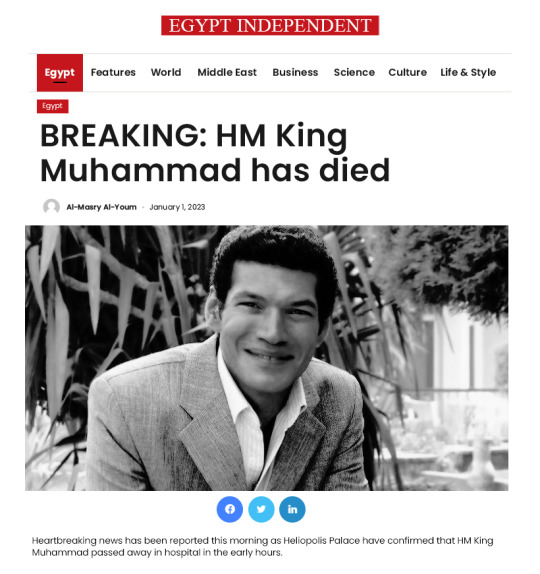
🚨 BREAKING: HM KING MUHAMMAD HAS DIED. 1st January, 2023.
Heartbreaking news has been reported this morning as Heliopolis Palace have confirmed that HM King Muhammad passed away in hospital in the early hours.
It came after the King Muhammad was admitted to a private hospital following a fall on Christmas morning, however the King was said to be recovering well.
A cause of death has yet to be revealed, but Heliopolis Palace have released this statement:
It is with great sadness that we can confirm His Majesty King Muhammad has died at a private hospital in the early hours of this morning. The King served the people of Egypt for almost three decades, and will be greatly missed. A statement from His Majesty King Amon will be publicised in due course.
a timeline of the next week bc i don’t want to post ten million a week:
01/01: news breaks about the death of the king, circumstances unkown.
02/01: 40 days of mourning begins as does the investigation, port-mortem is underway. foul play hasn’t be ruled out.
06/01: post-mortem concludes that the death of the king was caused by a fatal air embolism which lead to a heart attack. the ongoing investigation confirms this as evidence of foul play, and the investigation of the king’s death turns into an investigation of the murder of the king.
7 notes
·
View notes
Photo

Horus is the Egyptian god of the sky, sunlight and wind. In the original, the deity of the royal power, the sun and the sky. However, almost every other god is the patron of the royal power and the sun in the Heliopolis Ennead, so for the plot I have highlighted only what will be needed, removing the excess. There is also a separate deity of the wind - Shu, however, since Shu is the grandfather/great-grandfather of the Mountain, he theoretically could well inherit this power)
As in the myth, Horus, as an adult, having learned the truth about his origin from Isis: about his father, Osiris, about the murder of his father and decides to restore justice and regain his rightful throne.
Despite the fact that Isis, while Horus was growing up, was persecuted by order of the ruler of Egypt, Seth, Isis skillfully hid with Horus in one of the Egyptian villages, where Horus grew up in poverty, but happiness, not knowing what the future promised him, since Isis hid their joint royal status for the time being and his past.
Ignorant of sorrows, naive Horus believes that, like his father, he will become an exemplary ruler, will be able to lead Egypt to prosperity without bloodshed, will be able to convince his harsh uncle Seth by appealing to his conscience, and will voluntarily return the rightful throne of Egypt.
Gore does not yet know how far he is from the harsh reality and how poorly he knows his family...🔒
4 notes
·
View notes
Text
Tampoco se me olvida que vino ALFREDO URDACI [compañero de TELEDIARIO de LETIZIA ORTIZ cuando el 11_$] a entrevistar a mi padre a su EMPRESA para CONTRA_PORTADA diario económico CINCO DIAS y cuando paso delante de mi..ni me SALUDO y lo NOTE COMO ACONGOJADO
Por cierto..creo que COMA que cierra el cd USE YOUR ILLUSION I es muy REVELADORA sobre lo que me paso sobre TODO PORQUE NO QUIERO VOLVER A ESTE NAUSEABUNDO MUNDO Y ESPERO A ALGUIEN EN UNA ENCRUCIJADA [que abre RIGHT NEXT DOOR TO HELL e incluye NOVEMBER RAIN que la escuche ensayar y luego tocar a AXL ROSE en auditorio del parque JUAN CARLOS I o a 500 mts de mi casa en mayo 2006 [donde no hicieron ningún concierto más y en esta en estado de ABANDONO].. en su 1er concierto en EUROPA en 13 años saliendo con 2 hrs de retraso [00.00] siendo dia laborable ..por lo que los espectadores ARRANCARON LOS ASIENTOS y le llamaron MOTHERFUCKER cuando entonces tocaba con los NEW GUNS N ROSES y llevaba 10 años de retraso en lanzar CD CHINESE DEMOCRACY [que me compre cuando salió en el ZOCALO DE MEXICO DF el día después de ver a MIGUEL BOSE en el FORO SOL presentar cd PAPITO que incluye LO QUE HAY ES LO QUE VES que regrabo con Michael STIPE de REM=FASE DEL SUEÑO..al que vi 4 días antes en AUDITORIO NAZIONAL presentar cd ACCELERATE en cuya portada sale TORRES BLANCAS=UNA Y GRIS por cuestión presupuestaria en calle CORAZON DE MARIA, 2 en MADRID frente a donde estaba el INCENDIADO ROCK_OLA cuando actuaba LA SANTA SEDE el día posterior a mi cumpleaños 13 y siendo el anterior que actuo NICK CAVE [presentando debut cd FROM HER TO ETERNITY seguido de FIRST BORN IS DEAD por el GEMELO DE ELVIS nacido en TU_PELO basada en la de JOHNNY LEE HOOKER sobre una FUERTE TORMENTA cuando nació ELVIS e incluyendo imageneria CRISTIANA] que grabó con KYLIE [le pidió su contacto al extrañamente suicidado en Nov 1997 HUTCHENCE de INXS que me dio su cerveza MEXICANA CORONA en sala DIVINO AQUALUNG con el PAPA JUAN PABLO II en ESPAÑA y luego el hijo de ADORACION o Santiago Jimenez Martin no me aviso que dio INXS un mini_concierto en el HARD ROCK CAFE en marzo de 1997 presentando cd ELEGANTLY WASTED] ..la canción WHERE THE WILD ROSES GROW del cd MURDER BALLADS y que ella incluyo en IMPOSIBLE PRINCESS [cambiado en UK por cd KYLIE MINOGUE'98 al morir LADY DI en PARIS en ESTRAÑO ACCIDENTE bajo el PUENTE ALMA] en cuyo video la MATA sumergiéndola en el AGUA pasandola una SERPIENTE POR ENCIMA recreando la muerte de OFELIA en HAMLET
Luego toco GLUTA_MATO YEYE [cuyo recopilatorio por sus 33 años se título VAYA CRISTO y con PORTADA como LA ULTIMA CENA] tras incendiarse ROCK OLA con LA SANTA SEDE
Por cierto..recuerdo que la última vez que escuche COMA en directo de GUNS N ROSES fue en junio 2022 en el estadio del barrio de HELIOPOLIS [CIUDAD DEL SOL] en SEVILLA o estadio del BETIS en el que debuto en LIGA [y con REAL MADRID] CRISTO Gonzalez nacido en SANTA CRUZ de TENER_I_FE siendo traspasado a continuacion al HUESCA [la MAGIA] y presentado junto a IVAN LOPEZ alias IVI del LEVANTE ..tras haber retrasado un año el concierto por CORONA_VIRUS



youtube




0 notes
Text
Saints&Reading: Thursday, March 14, 2024
march 2_march 14
THE HOLY MARTYRESS ANTONINA of NICAEA in BYTHINIA (284-305)

The Holy Martyr Antonina suffered at Nicea during the persecution under the emperor Maximian (284-305). After fierce tortures, Saint Antonina was thrown into prison, but Maximian could not force the saint to renounce Christ and offer sacrifice to idols.
Angels of God appeared to the holy martyr, and the executioners took fright. Even when they placed her on a red-hot metal bed, Saint Antonina remained unharmed by the power of God. Finally, after prolonged torture, they sewed the saint into a sack and sank it in a lake.
THE HOLY MONASTIC MARTYR EUDOCIA OF HELIOPOLIS (152)
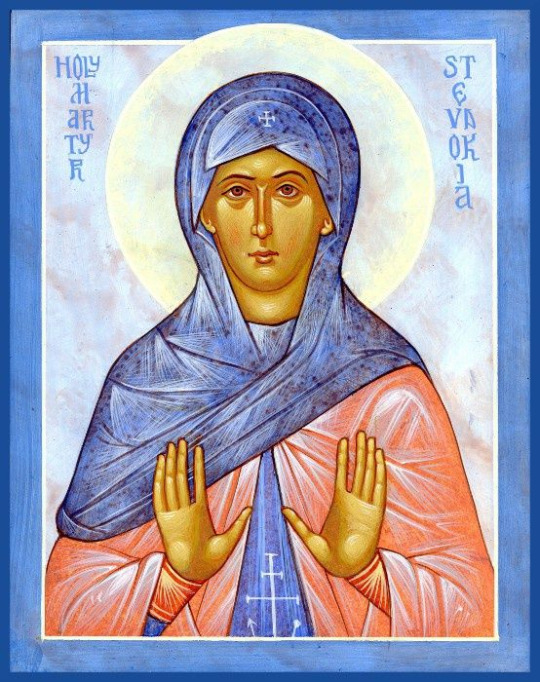
Holy Monastic Martyr Eudokia was a Samaritan, a native of Heliopolis in Phoenicia (modern Baalbek), who lived during Trajan's reign (98-117). Her pagan impiety took her off the good path, and for a long time, she led a sinful life. Her soul was deadened, and her heart hardened.
Eudokia awoke one night at midnight and heard singing from the house of a Christian woman next to hers. A monk was reading from a book which described the Last Judgment, the punishment of sinners, and the reward of the righteous. The grace of God touched Eudokia’s heart, and she grieved because of her great wealth and for her sinful life.
In the morning Eudokia hastened to call on the man whose rule of prayer she heard the previous night. This was a monk named Germanus, returning from pilgrimage to the holy places to his own monastery. Eudokia listened for a long time to the guidance of the Elder, and her soul was filled with joy and love for Christ. She asked Germanus to stay in her home for a week, during which she secluded herself in her room, and spent her time in fasting and prayer.
The Elder Germanus told her to give away her wealth and to forget her previous life. Eudokia received holy Baptism from Bishop Theodotus of Heliopolis. She entered a monastery and took upon herself stringent acts of penitence. The Lord forgave the penitent sinner and endowed her with spiritual gifts.
After she had become the head of the monastery, the young pagan Philostrates (one of her former lovers) heard of her conversion to Christ and longed to see her again. Aflame with impious passion, he came into the monastery in the guise of a monk and began to urge Eudokia to return to Heliopolis, and resume her former life. “May God rebuke you and not allow you to leave these premises,” Eudokia cried. Then the impostor fell down dead. Fearing that she had served as an accomplice to murder, the sisters intensified their prayer and besought the Lord to reveal to them His will.
The Lord appeared to Saint Eudokia in a vision and said: “Arise, Eudokia, and pray for the resurrection of the dead man.” Through Eudokia’s prayers, Philostrates was revived. Having been restored to life, the pagan begged the nun to forgive him. After he was baptized, he went back to Heliopolis. From that time, he never forgot the mercy God showed him, and he started on the way of repentance.
Some time passed, and another situation occurred. Inhabitants of Heliopolis reported to the governor Aurelian, that Eudokia had taken gold and silver out of the city and concealed it at the monastery. Aurelian sent a detachment of soldiers to confiscate these supposed treasures. For three days the soldiers tried in vain to approach the walls of the monastery, but an invisible power of God guarded it.
Aurelian again sent soldiers to the monastery, this time under the command of his own son. But on the very first day of the journey, Aurelian’s son injured his leg and soon died. Then Philostrates counseled Aurelian to write to Mother Eudokia, imploring her to revive the youth. And the Lord, in His infinite mercy, and through the prayers of Saint Eudokia, restored the youth to life. Having witnessed this great miracle, Aurelian and his close associates believed in Christ and were baptized.
When persecutions against Christians intensified, they arrested Eudokia and brought her to the Governor, Diogenes, to be tortured. While torturing the saint, the military commander Diodorus received news of the sudden death of his wife Firmina. In despair, he rushed to Saint Eudokia with a plea to pray for his departed wife. The monastic martyr, filled with great faith, prayed to God and besought Him to return Firmina to life. As eyewitnesses of the power and grace of the Lord, Diodorus and Diogenes believed in Christ and were baptized with their families. Saint Eudokia lived for awhile at the house of Diodorus and enlightened the newly-illumined Christians.
Once, the only son of a certain widow, who was working in the garden, was bitten by a snake and died. The mother wept bitterly for her dead son and asked Diodorus to resurrect him. Learning of her grief, Saint Eudokia told Diodorus, “The time is at hand for you to show faith in the Almighty God, Who hears the prayers of penitent sinners and in His mercy grants them forgiveness.”
Diodorus was distressed, not considering himself worthy of such boldness before the Lord, but he obeyed Saint Eudokia. He prayed, and in the name of Christ, he commanded the dead one to rise, and before the eyes of everyone present, the youth revived.
Saint Eudokia returned to her monastery, where she lived in asceticism for fifty-six years.
After Diogenes died, the new governor was Vicentius, a fierce persecutor of Christians. Having learned of the accomplishments of the saint, he gave orders to execute her. The holy martyr was beheaded on March 1, 107.
Source: Orthodox Church in America _OCA
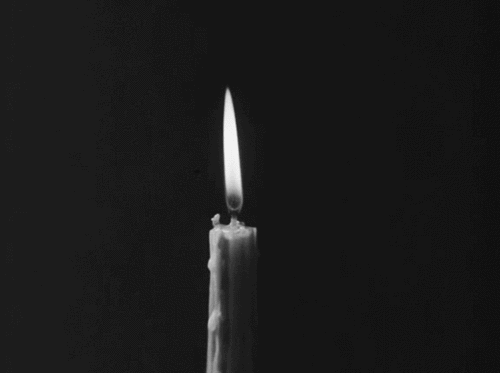
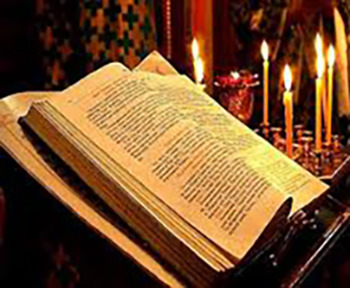
JUDE 1:11-25
11 Woe to them! For they have gone in the way of Cain, have run greedily in the error of Balaam for profit, and perished in the rebellion of Korah. 12 These are spots in your love feasts, while they feast with you without fear, serving only themselves. They are clouds without water, carried about by the winds; late autumn trees without fruit, twice dead, pulled up by the roots; 13 raging waves of the sea, foaming up their own shame; wandering stars for whom is reserved the blackness of darkness forever. 14 Now Enoch, the seventh from Adam, prophesied about these men also, saying, "Behold, the Lord comes with ten thousands of His saints, 15 to execute judgment on all, to convict all who are ungodly among them of all their ungodly deeds which they have committed in an ungodly way, and of all the harsh things which ungodly sinners have spoken against Him. 16 These are grumblers, complainers, walking according to their own lusts; and they mouth great swelling words, flattering people to gain advantage. 17 But you, beloved, remember the words which were spoken before by the apostles of our Lord Jesus Christ: 18 how they told you that there would be mockers in the last time who would walk according to their own ungodly lusts. 19 These are sensual persons, who cause divisions, not having the Spirit. 20 But you, beloved, building yourselves up on your most holy faith, praying in the Holy Spirit, 21 keep yourselves in the love of God, looking for the mercy of our Lord Jesus Christ unto eternal life. 22 And on some have compassion, making a distinction; 23 but others save with fear, pulling them out of the fire, hating even the garment defiled by the flesh. 24 Now to Him who is able to keep you from stumbling, And to present you faultless Before the presence of His glory with exceeding joy, 25 To God our Savior, Who alone is wise, Be glory and majesty, Dominion and power, Both now and forever. Amen.
LUKE 23:1-34
1 Then the whole multitude of them arose and led Him to Pilate. 2 And they began to accuse Him, saying, "We found this fellow perverting the nation, and forbidding to pay taxes to Caesar, saying that He Himself is Christ, a King." 3 Then Pilate asked Him, saying, "Are You the King of the Jews?" He answered him and said, "It is as you say." 4 So Pilate said to the chief priests and the crowd, "I find no fault in this Man." 5 But they were the more fierce, saying, "He stirs up the people, teaching throughout all Judea, beginning from Galilee to this place." 6 When Pilate heard of Galilee, he asked if the Man were a Galilean. 7 And as soon as he knew that He belonged to Herod's jurisdiction, he sent Him to Herod, who was also in Jerusalem at that time. 8 Now when Herod saw Jesus, he was exceedingly glad; for he had desired for a long time to see Him, because he had heard many things about Him, and he hoped to see some miracle done by Him. 9 Then he questioned Him with many words, but He answered him nothing. 10 And the chief priests and scribes stood and vehemently accused Him. 11 Then Herod, with his men of war, treated Him with contempt and mocked Him, arrayed Him in a gorgeous robe, and sent Him back to Pilate. 12 That very day Pilate and Herod became friends with each other, for previously they had been at enmity with each other. 13 Then Pilate, when he had called together the chief priests, the rulers, and the people, 14 said to them, "You have brought this Man to me, as one who misleads the people. And indeed, having examined Him in your presence, I have found no fault in this Man concerning those things of which you accuse Him; 15 no, neither did Herod, for I sent you back to him; and indeed nothing deserving of death has been done by Him. 16 I will therefore chastise Him and release Him 17 (for it was necessary for him to release one to them at the feast). 18 And they all cried out at once, saying, "Away with this Man, and release to us Barabbas"- 19 who had been thrown into prison for a certain rebellion made in the city, and for murder. 20 Pilate, therefore, wishing to release Jesus, again called out to them. 21 But they shouted, saying, "Crucify Him, crucify Him!" 22 Then he said to them the third time, "Why, what evil has He done? I have found no reason for death in Him. I will therefore chastise Him and let Him go." 23 But they were insistent, demanding with loud voices that He be crucified. And the voices of these men and of the chief priests prevailed. 24 So Pilate gave sentence that it should be as they requested. 25 And he released to them the one they requested, who for rebellion and murder had been thrown into prison; but he delivered Jesus to their will. 26 Now as they led Him away, they laid hold of a certain man, Simon a Cyrenian, who was coming from the country, and on him they laid the cross that he might bear it after Jesus. 27 And a great multitude of the people followed Him, and women who also mourned and lamented Him. 28 But Jesus, turning to them, said, "Daughters of Jerusalem, do not weep for Me, but weep for yourselves and for your children. 29 For indeed the days are coming in which they will say, 'Blessed are the barren, wombs that never bore, and breasts which never nursed!' 30 Then they will begin 'to say to the mountains, Fall on us!" and to the hills, "Cover us!" ' 31 For if they do these things in the green wood, what will be done in the dry? 32
There were also two others, criminals, led with Him to be put to death. 33
And when they had come to the place called Calvary, there they crucified Him, and the criminals, one on the right hand and the other on the left. 34 Then Jesus said, "Father, forgive them, for they do not know what they do." And they divided His garments and cast lots.
#orthodoxy#orthodoxchristianity#easternorthodoxchurch#originofchristianity#spirituality#holyscriptures#gospel#bible#wisdom#saints
0 notes
Text
Timeline
Ancient Egypt: 18th Dynasty, 14th Century B.C.E
1341 B.C.E Prince Atem is born to Pharaoh Akhenamkhanon and Royal Chief Wife Nefertari in Thebes.
1337 B.C.E 4 years old. Atem begins his training in the Temples of Amun and Ra with the persistence of his mother. He meets his aunt for the first time as well as other members of his family from his mother’s side who had entered the priesthood.
Royal Chief Wife Nefertari starts to instruct her son personally on physical combat.
1336 B.C.E 5 years old. Royal Chief Wife Nefertari is murdered during the attack by the Hittites in a remote village a week after Atem’s name day celebration.
A month later. The proposition for the items constructions is put forward by High Priest Akhenaden and his co-conspirators. Pharaoh Akhenamkhanon, unknowingly, approves of the slaughter of the 99 villagers of Kul Elna.
A week later. The creation of the Millennium Items is complete after 7 days and nights. The items are presented to Pharaoh Akhenaden and then distributed to his court.
Three days later. The battle with the Hittites hits a peak, as they attempt to storm Thebes only to be thwarted back by the powers of the Millennium Items. Pharaoh Akhenamkhanon bears the puzzle.
1336 - 1330 B.C.E. 5-11 years old. Atem continues his studies as the successor to the throne. Several attempts on his life are made during this time
6 years old. Atem meets Mahad and Mana for the first time.
His training at the temples continued as it was a request from his late mother, however, the guards around him increased. Mana and Mahad accompany him. He stays at the temples several months out of the year. He starts to learn from the Temples of Isis, Set, Sekhmet, and Sobek.
His combat training is continued with the help of his aunt and a distant relative from Nubia.
An Egyptian Asp is spotted in the royal gardens and attempts to bite the young prince. Mahad takes the bite instead and Atem sucks the poison out of the wound.
7 years old. The search for a bride for Prince Atem is started though not as heavily as the court would like. Pharaoh Akhenamkhanon insists that Prince Atem should marry who he loves. This causes friction between the Pharaoh and the noblemen.
An attempt on Atem’s like is taken during the Festival of Sekhmet. The assassin entered the festivities disguised as a servant to the nobility and royal family during the evening. A drink meant for the consumption of all children present was poisoned when given to Prince Atem. Fortunately, the wielder of the Millennium Necklace foresaw it, and the perpetrator was seized. No children were harmed and security was increased. All food and drink that is to be presented to the royal family since this incident was to be made by staff from the palace.
A later celebration for a member of his father’s court takes place. Atem meets several of his potential brides at the event much to his father’s dissatisfaction. The young prince however doesn’t appear to be bothered meeting his potential brides, even though he does not think of them as such
8 years old. Atem is taught the dances that are performed during important rituals and festivals for the Gods. He is then allowed to perform them for their respected purposes.
Atem is sent to Iunu (Heliopolis) where the cult of Atum and Ra is prevalent. Because of his status as heir to the throne and similar naming to their Gods, Atem is treated with high respect and near blinding devotion. It is the first time that the young prince is treated as a divine being, instead of just a royal.
Learns the rituals for the ashes of the Bennu bird, which he performs with each turn of the seasons.
Is allowed to go to the yearly festival for Wadjet in Per-Wadjet without his father accompanying him. However, the amount of guards have not let up.
Mana and Mahad do not accompany him and are kept in Thebes.
10 years old. Atem is given more duties that were usually reserved for the Pharaoh.
His stays in various temples dwindle as he is kept more in the palace within Thebes.The royal family moved to Inebu-Hedj (Memphis) where it becomes the main capital and permanent home of the royal family.
Atem is sent to Hout-Ka-Ptah (House of the Soul of Ptah) in order to be taught more firmly of his duties as a crown prince. Combat training, literacy, and languages are taught to him during this time on a near daily basis.
Atem meets a younger Seto for the first time.
Rivalry begins sometime after this meeting.
Potential brides for the young prince are sent to the palace in Inebu-Hedj against Pharaoh Akhenamkhanon wishes. However, the pressures of the noble houses and those within his inner court are amounting, as a need for the royal bloodline to continue grows. The Pharaoh’s age makes them concerned.
As Atem has returned from his travels through the various temples across the nomes, he is now seen often by his father’s side.
His responsibilities as successor increases. He is seen taken part in court proceedings to pass judgements against individuals and accompanies his father in royal matters with the leaders of various nomes.
1330 - 1327 B.C.E. 11-13 years. His life as a successor does not become easier. His circle of companions decreases to only to those within the palace walls. Atem experiences loneliness and a need for companionship, however his feelings for his birthright weigh against him.
0 notes
Text
Vocabulary (pt.mlxxv)
Words taken from Egyptian Myths by Eric Braun:
Isfet (n.) injustice, violence; an ancient Egyptian term from Egyptian mythology used in philosophy, which was built on a religiously, socially, and politically affected dualism. It was thought to be the counterpart of the term Ma’at (meaning “order” or “harmony”). [x]
Maat, Ma’at the ancient Egyptian goddess of truth, justice, and cosmic order, daughter of Ra. She is depicted as a young and beautiful woman, standing or seated, with a feather on her head.
Khnum the ancient Egyptian god of fertility, associated with water and with procreation. Khnum was worshipped from the 1st dynasty (c. 2925–2775 BCE) into the early centuries CE. He was represented as a ram with horizontal twisting horns or as a man with a ram’s head. Khnum was believed to have created humankind from clay like a potter; this scene, with him using a potter’s wheel, was depicted in later times. [x]
Isis the ancient Egyptian nature goddess, wife of Osiris and mother of Horus. Her worship spread to western Asia, Greece, and Rome, where she was identified with many and varied local goddesses.
Seth, Setekh the ancient Egyptian evil god who murdered his brother Osiris and wounded Osiris’s son Horus. Seth is represented as having the head of a beast with a long pointed snout.
Osiris the ancient Egyptian god originally connected with fertility, husband of Isis and father of Horus. He was killed by his brother Seth but subsequently restored to a new life as ruler of the afterlife.
Nut the ancient Egyptian sky goddess, thought to swallow the sun at night and give birth to it in the morning. She is usually depicted as a naked woman, with her body arched above the earth that she touched with her feet and hands.
Geb the ancient Egyptian god of the earth, the physical support of the world. Geb constituted, along with Nut, his sister, the second generation in the Ennead (group of nine gods) of Heliopolis. In Egyptian art Geb, as a portrayal of the earth, was often depicted lying by the feet of Shu, the air god, with Nut, the goddess of the sky, arched above them. [x]
Tefnut the ancient Egyptian goddess of rain, water, and moisture. She was also at times a lunar deity, associated with the cycles and power of the moon. [x]
Nephthys, Nebtho the ancient Egyptian goddess who seems to have been artificially created in apposition to Isis to be a second sister to the god Osiris and wife to his brother Set (Setekh). [x]
#av#avdictionary#Egyptian Myths#ancient egypt#ancient egyptian gods#ancient egyptian goddesses#Eric Braun
27 notes
·
View notes
Text
Egyptian Deities
Male
Aker – A god of the earth and the horizon
Amun – A creator god, patron deity of the city of Thebes, and the pre-eminent deity in Egypt during the New Kingdom
Anhur – A god of war and hunting
Aten – Sun disk deity who became the focus of the monolatrous or monotheistic Atenist belief system in the reign of Akhenaten
Atum – A creator god and solar deity, first god of the Ennead
Bennu – A solar and creator deity, depicted as a heron
Geb – An earth god and member of the ennead
Hapi – Personification of the Nile flood
Horus – A major god, usually shown as a falcon or as a human child, linked with the sky, the sun, kingship, protection, and healing. Often said to be the son of Osiris and Isis.
Khepri – A solar creator god, often treated as the morning form of Ra and represented by a scarab beetle
Khnum (Khnemu) – A ram god, the patron deity of Elephantine, who was said to control the Nile flood and give life to gods and humans
Khonsu – A moon god, son of Amun and Mut
Maahes (Mahes, Mihos) – A lion god, son of Bastet
Montu – A god of war and the sun, worshipped at Thebes
Nefertum – God of the lotus blossom from which the sun god rose at the beginning of time. Son of Ptah and Sekhmet.
Nemty – Falcon god, worshipped in Middle Egypt who appears in myth as a ferryman for greater gods
Neper – A god of grain
Osiris – god of death and resurrection who rules the underworld and enlivens vegetation, the sun god, and deceased souls
Ptah – A creator deity and god of craftsmen, the patron god of Memphis
Ra – The sun god
Set – An ambivalent god, characterized by violence, chaos, and strength, connected with the desert. Mythological murderer of Osiris and enemy of Horus, but also a supporter of the king.
Shu – Embodiment of wind or air, a member of the Ennead
Sobek – Crocodile god, worshipped in the Faiyum and at Kom Ombo
Sopdu – A god of the sky and of Egypt's eastern border regions
Thoth – A moon god, and a god of writing and scribes, and patron deity of Hermopolis
Wadj-wer – Personification of the Mediterranean sea or lakes of the Nile DeltaFemale
Amunet – Female counterpart of Amun and a member of the Ogdoad
Anuket – A feathered headdress wearing goddess of Egypt's southern frontier regions, particularly the lower cataracts of the Nile
Bastet – Goddess represented as a cat or lioness, patroness of the city of Bubastis, linked with protection from evil
Bat – Cow goddess from early in Egyptian history, eventually absorbed by Hathor
Hathor (Egyptian: Het-Hert) – One of the most important goddesses, linked with the sky, the sun, sexuality and motherhood, music and dance, foreign lands and goods, and the afterlife. One of many forms of the Eye of Ra
Heqet – Frog goddess said to protect women in childbirth
Hesat – A maternal cow goddess
Imentet (Amentet) – An afterlife goddess closely linked with Isis and Hathor
Isis – Wife of Osiris and mother of Horus, linked with funerary rites, motherhood, protection, and magic. She became a major deity in Greek and Roman mythology
Maat – Goddess who personified truth, justice, and order
Menhit – A lioness goddess
Mut – Consort of Amun, worshipped at Thebes
Neith – A creator and hunter goddess, patron of the city of Sais in Lower Egypt
Nekhbet (Nekhebit) – A vulture goddess, the tutelary deity of Upper Egypt
Nephthys (Egyptian: Nebet-Het) – A member of the Ennead, the consort of Set, who mourned Osiris alongside Isis
Nepit – A goddess of grain, female counterpart of Neper
Nut – A sky goddess, a member of the Ennead
Pakhet – A lioness goddess mainly worshipped in the area around Beni hasan
Renenutet – An agricultural goddess
Satet – A goddess of Egypt's southern frontier regions
Sekhmet – A lioness goddess, both destructive and violent and capable of warding off disease, protector of the pharaohs who led them in war, the consort of Ptah and one of many forms of the Eye of Ra
Tefnut – Goddess of moisture and a member of the Ennead
Wadjet (Uatchit) – A cobra goddess, the tutelary deity of Lower Egypt
Wosret (Egyptian: Usret) – A goddess of Thebes
Both male and female forms
Anubis/Anput – The god/goddess of embalming and protector of the dead
Heh – Personification of infinity and a member of the Ogdoad
Kek – The god of Chaos and Darkness, as well as being the concept of primordial darkness. Kek's female form is known as Kauket.
Nu (Nun) – Personification of the formless, watery disorder from which the world emerged at creation and a member of the Ogdoad
Ra (Re) – The foremost Egyptian sun god, involved in creation and the afterlife. Mythological ruler of the gods, father of every Egyptian king, and the patron god of Heliopolis
Tatenen – Personification of the first mound of earth to emerge from chaos in ancient Egyptian creation myths
Information found on: https://en.wikipedia.org/wiki/List_of_Egyptian_deities
56 notes
·
View notes
Photo
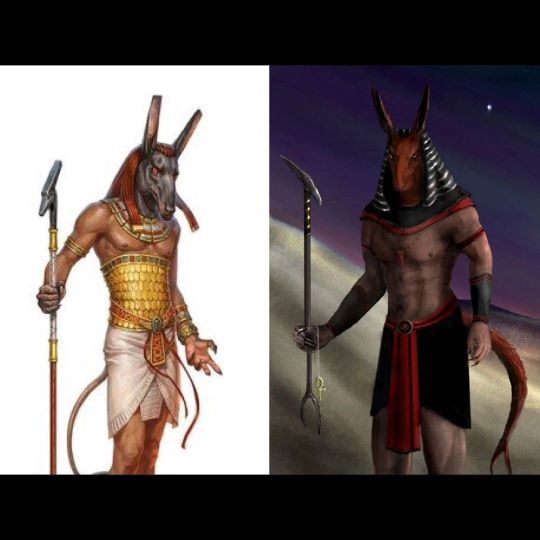
Did you know there were Two Seths (Nubet and Heliopolis)? 1. Seth of Nubet/Kom Ombo 𓋞𓃀𓇌𓏏𓊖 “nwbyt” (or Seth the ombite, Seth the former) The god Seth specified here is Seth of Nubet (Ombos, Nagada) who had a specific sanctuary ('per-wer', the name of the oldest national shrine of Upper Egypt) in the Vth nome 𓈺 “nṯrwy” ‘the Two Gods’ of Upper Egypt 𓇾𓇙 “t3-šmˁ”. 2. Seth 𓊃𓏏𓈙𓁣 “stẖ” of Heliopolis 𓉺𓏌𓏏𓊖 “iwnw”, the brother 𓌢𓈖𓀀 “sn” and assassin of Osiris 𓊨𓁹 “wsir”. He is the evil uncle of Horus, who battle his nephew for the throne of Egypt 𓇾𓌸𓂋𓆵𓇋𓊖𓊖 “t3-mrı͗”. He was eventually defeated and punished to live out his days on the barque of Ra 𓂋𓂝𓁛 “rˁ” and battle the great snake Apophis Apep 𓉼𓊪𓊪𓆙 “ˁ3pp”. Seth of Nubet is associated with the red crown 𓋔 “ı͗ni”. In the predynastic period, the city of Nubet, and that of Nekhen 𓊔𓊖 “nḫn”(Hierakonpolis), whose god was Horus 𓅄 “ḥr” (the Elder) the White Crown 𓌉𓏏𓋑 “ḥḏ.t”. The confrontation of the two kingdoms, and the annexing of the kingdom of Nubet by the kingdom of Nekhen became a founding myth - the image of the white crown swallowing the red crown (Pyramid Texts 243a and 410a). In the Middle Kingdom, one would see the two gods uniting the floral symbols of Upper and Lower Egypt 𓇾𓇊 “t3-mḥw” in the 𓋍 “sm3-t3wy” ‘Uniting the Two Lands’ symbol, combining the lilies 𓆸 of Upper Egypt and papyrus 𓆻 of Lower Egypt. Seth the Former (of Nubet), he must be distinguished from the other Seth who murdered his brother Osiris, because that Seth dates from considerably later, appearing in the Vth Dynasty, at the same time as the Osirian dogma. Photos 📸: 2. Throne Name of Senusret I, 3. Abu Simbel Temple, 4. Ramses III Statue, 7. Edfu Temple 𓋹𓎬𓋹𓎬𓋹𓎬𓋹𓎬𓋹𓎬𓋹𓎬𓋹𓎬𓋹𓎬𓋹𓎬𓋹𓎬𓋹𓎬𓋹𓎬𓋹𓎬𓋹𓎬𓋹𓎬𓋹𓎬 Follow: @egyptologylessons 𓋹𓊽𓋴𓆖𓎛𓇳𓎛 𓊁𓊁𓊁𓊁𓊁𓊁𓊁𓊁𓊁𓊁𓊁𓊁𓊁𓊁𓊁𓊁𓊁 #Ancienthistory #historyfacts #historylovers #ancientegypt #hieroglyphics #ägypten #egyptologist #egyptianhistory #egyptology #hieroglyphs #egypte #egyptians #egitto #埃及 #مصر #egipto #이집트 #art #culture #history #seth #horus #sematawy #unification https://www.instagram.com/p/CUXUuUiLHOs/?utm_medium=tumblr
#ancienthistory#historyfacts#historylovers#ancientegypt#hieroglyphics#ägypten#egyptologist#egyptianhistory#egyptology#hieroglyphs#egypte#egyptians#egitto#埃及#مصر#egipto#이집트#art#culture#history#seth#horus#sematawy#unification
18 notes
·
View notes
Text
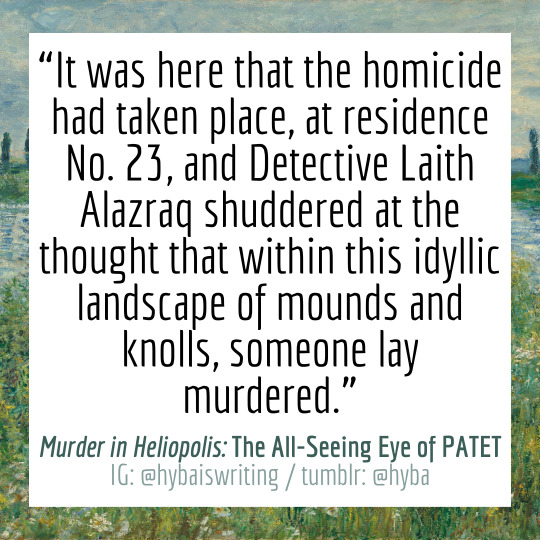
Edited Ch. 1 Scene 1 ✒ Here's a line.
🌿 Learn more about the futuristic solarpunk thriller Murder in Heliopolis on my blog.
[Tag list open 📌 Ask to be added!]
7 notes
·
View notes
Text
List of Egyptian gods and goddesses ✨
Male✨
☆Aker – A god of the earth and the east and west horizons of the Underworld
☆Amun – A creator god, patron deity of the city of Thebes, and the preeminent deity in Egypt during the New Kingdom
☆ Anhur – A god of war and hunting
☆ Aten – Sun disk deity who became the focus of the monolatrous or monotheistic Atenistbelief system in the reign of Akhenaten
☆Atum – A creator god and solar deity, first god of the Ennead
☆Bennu – A solar and creator deity, depicted as a bird
☆Geb – An earth god and member of the Ennead
☆Hapi – Personification of the Nile flood
☆Horus – A major god, usually shown as a falcon or as a human child, linked with the sky, the sun, kingship, protection, and healing. Often said to be the son of Osiris and Isis.
☆Khepri – A solar creator god, often treated as the morning form of Ra and represented by a scarab beetle
☆Khnum (Khnemu) – A ram god, the patron deity of Elephantine, who was said to control the Nile flood and give life to gods and humans
☆Khonsu – A moon god, son of Amun and Mut
☆Maahes – A lion god, son of Bastet
☆Montu – A god of war and the sun, worshipped at Thebes
☆Nefertum – God of the lotus blossom from which the sun god rose at the beginning of time. Son of Ptah and Sekhmet.
☆Nemty – Falcon god, worshipped in Middle Egypt,[18] who appears in myth as a ferryman for greater gods
☆Neper – A god of grain
☆Osiris – god of death and resurrection who rules the underworld and enlivens vegetation, the sun god, and deceased souls
☆Ptah – A creator deity and god of craftsmen, the patron god of Memphis
☆Ra – The sun god
☆Set – An ambivalent god, characterized by violence, chaos, and strength, connected with the desert. Mythological murderer of Osiris and enemy of Horus, but also a supporter of the king.
☆Shu – Embodiment of wind or air, a member of the Ennead
☆Sobek – Crocodile god, worshipped in the Faiyum and at Kom Ombo
☆Sopdu – A god of the sky and of Egypt's eastern border regions
☆Thoth – A moon god, and a god of writing and scribes, and patron deity of Hermopolis
☆Wadj-wer – Personification of the Mediterranean sea or lakes of the Nile Delta
Female✨
☆Amunet – Female counterpart of Amun and a member of the Ogdoad
☆Anuket – A goddess of Egypt's southern frontier regions, particularly the lower cataracts of the Nile
☆Bastet – Goddess represented as a cat or lioness, patroness of the city of Bubastis, linked with protection from evil
☆Bat – Cow goddess from early in Egyptian history, eventually absorbed by Hathor
☆Hathor – One of the most important goddesses, linked with the sky, the sun, sexuality and motherhood, music and dance, foreign lands and goods, and the afterlife. One of many forms of the Eye of Ra.
☆Heqet – Frog goddess said to protect women in childbirth
☆Hesat – A maternal cow goddess
☆Imentet – An afterlife goddess closely linked with Isis and Hathor
☆Isis – Wife of Osiris and mother of Horus, linked with funerary rites, motherhood, protection, and magic. She became a major deity in Greek and Roman religion.
☆Ma'at – Goddess who personified truth, justice, and order
☆Menhit – A lioness goddess
☆Mut – Consort of Amun, worshipped at Thebes
☆Neith – A creator and hunter goddess, patron of the city of Sais in Lower Egypt
☆Nekhbet (Nekhebit) – A vulture goddess, the tutelary deity of Upper Egypt
☆Nephthys (Neb-t kha-t) – A member of the Ennead, the consort of Set, who mourned Osiris alongside Isis
☆Nepit – A goddess of grain, female counterpart of Neper
☆Nut – A sky goddess, a member of the Ennead
☆Pakhet – A lioness goddess mainly worshipped in the area around Beni Hasan
☆Renenutet – An agricultural goddess
☆Satet – A goddess of Egypt's southern frontier regions
☆Sekhmet – A lioness goddess, both destructive and violent and capable of warding off disease, protector of the pharaohs who led them in war, the consort of Ptah and one of many forms of the Eye of Ra.
☆Tefnut – Goddess of moisture and a member of the Ennead
☆Wadjet (Uatchit) – A cobra goddess, the tutelary deity of Lower Egypt
☆Wosret – A goddess of Thebes
Both male and female forms✨
☆Heh – Personification of infinity and a member of the Ogdoad
☆Kek – The god of Chaos and Darkness, as well as being the concept of primordial darkness. Kek's female form is known as Kauket.
☆Nu – Personification of the formless, watery disorder from which the world emerged at creation and a member of the Ogdoad
☆Ra (Re) – The foremost Egyptian sun god, involved in creation and the afterlife. Mythological ruler of the gods, father of every Egyptian king, and the patron god of Heliopolis.
☆Tatenen – Personification of the first mound of earth to emerge from chaos in ancient Egyptian creation myths
☆Anubis/Anput – The god/goddess of embalming and protector of the dead
34 notes
·
View notes
Text
MFSRI: The Burning of Scylla Ramshorn Comprehensive Analysis; Scylla as Ovid’s Phoenix

A while back I proposed the Burning of Scylla Ramshorn as a theme for our Sexy Weird Necro (now re-branded, Sassy Sexy Weird Murder Nugget Necro). This was primarily about how she may have been burned in the past, either literally (her family was burned) or figuratively (Porter turned in her dodger parents). This evolved to include the fact that Scylla is literally wreathed in fire throughout the season, with actual flames and with more vague references to burning dancing around her. After having separate posts about this (here and here) in addition to my original theory, I figured I would first make a comprehensive list of all the times Scylla has referenced burning or is surrounded by actual flames throughout the season and then propose several options for what this might mean. Including, how the use of fire imagery combined with “nothing ever really dies” parallels to Ovid’s Metamorphosis and the Phoenix.
This one is a long one but come with me on this ride...
To start, we have all of the times she has used fire for Spree Glamour. (Note: Faux Raelle burning is still Scylla’s motif because she represents someone she cares about and loves, and the flames are reflected in Scylla’s eyes).

Then we have Scylla and Raelle in Memorial Hall discussing if the Burning Times are really over, followed directly by a shot with a fireplace in the background and Scylla in the foreground. The same fireplace Porter is standing next to a few seconds later (re: Porter burned Scylla).


And we have Scylla saying she has been burned before and tends to burn.


She also mentions the recent burnings of witches, even as recent as last year while she’s in the dungeon.
--
So, what does this all mean? The strength of this theme for Scylla is ominous. Is it possible foreshadowing of a literal burning? Could be. Perhaps Scylla is terrified that she herself will be burned at the stake since a witch had been burned as recently as last year. She is terrified she will be executed.

Perhaps this theme is referencing something that happened in the past, such as witnessing her parents being burned or being betrayed by someone she cared about as previously proposed. The parallels to Greek mythology in MFS have been a favorite topic of discussion amongst the theorist community and at the Research Institute, leading to many posts including analyses done by @captainjeclid and @trash-deluxe. We know that Scylla is a Greek monster. We know that Odysseus, whom Raelle parallels, encounters Scylla on his journey home (after having visited the underworld). Could the Burning of Scylla be referring to her own personal Odyssey through the underworld; her own inferno? Would be quite fitting, seeing that she is a Necro. But I think there is yet another possibility… and that is fire as a form of rebirth; that which has died, transforms into the living - shedding a previous nature for a new one.
After seeing how Scylla and Raelle parallel the Odyssey, I hope to convince you of yet another series of mythological parallels, this time as it relates to balance, resurrection, and life becoming death, over and over again, all while linking Scylla to the phoenix as a symbol of rebirth [through fire].
Ovid’s Metamorphosis is an epic poem thematically contemplating transformation. Here we get stories like that of Narcissus, the man doomed to love himself, and Arachne being transformed into a spider. Over 15 ‘books’, the Roman poet, Ovid weaves his tales and ends on one containing the teachings of Pythagoras. And what do we learn? To quote directly, “All things are always changing, but nothing dies. The spirit comes and goes, is housed wherever it wills, it shifts residence from beasts to men, from men to beasts, but always it keeps on living”. Sound familiar?
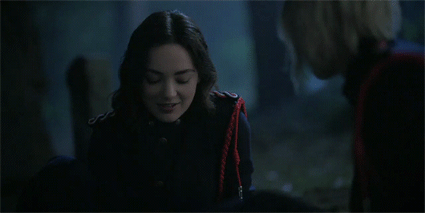
Scylla teaches us the same lesson in the graveyard when she shows Raelle the Death Cap. Death is not so cut and dry. Nothing ever really dies. Life becomes death which becomes life again. Over and over. Scylla is almost quoting Ovid verbatim here, “Nothing remains the same: the great renewer, Nature, makes form from form, and, oh, believe me that nothing ever dies.”
Pythagoras really says nearly these exact words several times. He explains that death is not what it seems and not to fear it, but to understand that our souls are deathless, and that when they leave our bodies, they will find new dwelling places. Things are not static. They are always changing. The soul, the life force, is recycled in a never ending and eternal circle… That which once was, is no longer the same but still present. It is a process of renewal… In other terms, while Necros cannot bring the dead back to life, the cycle of souls shifting residence is itself, a form of resurrection. So, even if Willa Collar is death, her soul is not gone. Just… repurposed. It’s going to be up to our little Necro to find it.

Aside: I just want to point out that this portion of Metamorphosis is riddled with examples of duality (day and night, fire and water, life and death), one of our favorite themes throughout MFS. And the never ending, harmonious cycle of renewal fits perfectly into a magic system built on the foundation of maintaining balance.
So besides quoting Ovid almost verbatim, giving us our MFS Necro “religion”, why else is this portion of Metamorphoses relevant? Because immediately following discussions on how the life of one creature can come from the death of another, we learn that while “all of these things have their beginning in some other creature, there is one bird which renews itself, out of itself. [They] call it the phoenix.”
Now, Pythagoras does not necessarily say that the phoenix is born out of its own ashes. In fact, the historical association of the phoenix with fire is hard to trace and I had difficulty finding anything related to the exact origin of flames. But the symbolism of the phoenix throughout its mythology associates with the sun and fire. In Egyptian mythology, the phoenix flies to Heliopolis, the “City of the Sun” and builds its nest atop the Temple of the Sun, or brings its remains there after rebirth. In various versions of this myth, the nest catches fire from the rays of the sun. I’m not about to make this a thesis on the origins of fire being associated with the phoenix, but for now, let’s fall back on our western mythology of being reborn in flames and connect them to the theme of “nothing ever dies” in Ovid’s Metamorphosis. Indeed, Pythagoras discusses fire several times throughout Book 15 and how fire itself is part of these changing cycles. Including one instance where he literally states that “[They] set wood on fire by pouring water on it in the dark of the moon.” Considering @theycallmestephlee established that Scylla is Fire and Raelle is Water … the parallels are hard to ignore.
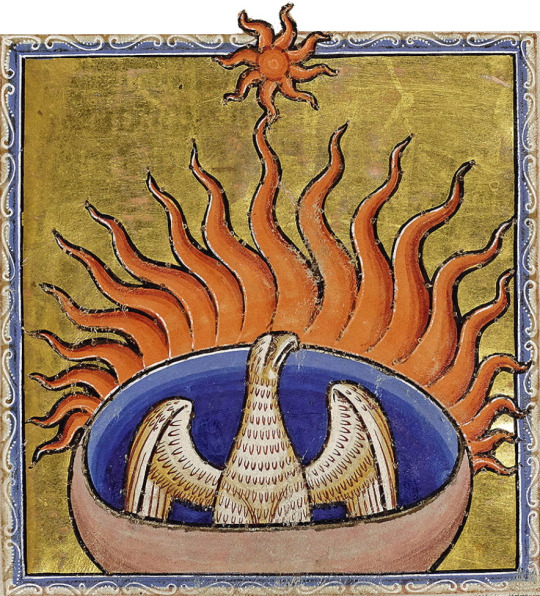
The Phoenix from the Aberdeen Bestiary could lead us down another rabbit hole of parallels with Christianity and Lesbian Jesus Christ, Raelle Collar as @likethefoximalwayschanging has established.
Ovid’s use of fire imagery throughout this portion of the poem, and the eventual association of the Phoenix with fire as a form of rebirth that is rooted in western legend, strongly suggests that Scylla is going through her own transformation by being wreathed in flames. She has lived her life by one set of values up until now, but her current nature is dying. Through that death, she will be renewed with a new moral compass. Scylla is questioning the foundations of her morality. She still believes that the Army is evil but knows that what the Spree asked her to do was equally horrendous (she has regret, she did not hand over Raelle). She has been through fire and brimstone, her own inferno. Her motivations were driven by that. She committed horrible acts. But now we’ve seen her begin strip away her old nature. Because Raelle, like water, found the cracks and flowed her way into Scylla’s fiery heart.
So even if there is a literal Burning of Scylla Ramshorn, she won’t die. She will be saved and “reborn” in a new light with a new nature. She has been scorched by fire in her past; what she has been through has led her to commit things which she regrets. There used to be no room for attachments, for love. But through her journey and through meeting and loving Raelle, her perspectives have changed. “That which has been, is not; that which was not, begins to be…”
Quotes from Rolfe Humphries’ translation of Metamorphoses.
#MFS Research Institute#mfs theories#mfs analysis#motherland fort salem#motherland: fort salem#scylla ramshorn#the burning of Scylla#sassy sexy weird murder nugget necro#necro things#ovid's metamorphoses#raelle collar#raylla
161 notes
·
View notes
Photo
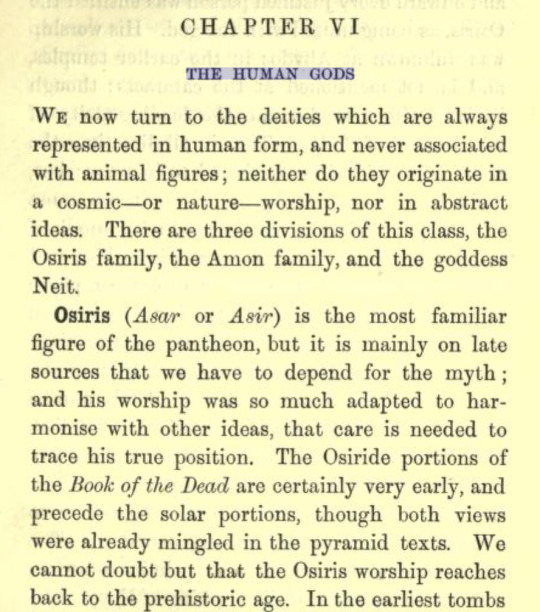
JEHOVAH OCCULT BIBLE [JOB] WITNESS Me [ME = U.S. Michael Harrell = TUT = JAH] on Earth [JE = JESUS] as Immortal DEATH [I.D.] GOD OSIRIS in 2021 [V]... who Immortally MURDERED [I’M] My [I’M] Ancient Human Ægyptian King TUTANKHAMÚN [iTUT®] DOPPELGÄNGER [i.D.] back in Ancient Egypt… Underneath America [ATLANTIS]… since iEsoterically Transcribed [iET] My Heavenly Father AKHENATEN's Highly Complex [ADVANCED] Ancient AMON FAMILY CODEX BOOK [BIBLE] of GODDESS NEITH’s... Primordially ANCIENT [PA = SUPERNATURAL] Immortal Human DEITIES of Everlasting Life [DEL = DELTA] BLOODLINES from Celestial [B.C.] SKY Ocean GOD NU… who Immortally DIED [I.D.] DEEP [I.D.] IN:side Inner Earth’s [HADES] OCCULTED [HIDDEN] Afterlife [HA = HARRELL] Human SOUL ENERGY KINGDOM [SEK = SEKHMET] HEAVENS of Ancient MITANNI’s [HAM = HAMITE's] Interstellar [HI = HITTITE] Heliopolis of ATLANTIS [HA = HATTUŠA]… as iSPIRITUALLY Envision Apparition [iSEA] Human ARCHANGEL [HA = HARRELL] MICHAEL who Scripturally Allegorized Texts of Universal Revelations from the NAZARETH [SATURN] CHRIST FAMILY of Scripturally ANCIENT [ANTEDILUVIAN] Human SUN ENERGY TEMPLES [SETS] of SIRIUS Thermal Infrared Energy [HEAT] DYNAMICS & MOTIONS [BIOMECHANICS] from Mysteriously UNSEEN [MU] Human SPIRITS who Electrophysiologically Envision [SEE] this IMMORTAL Human GOD of Earth [G.E. = JESUS]… Immaculately MANIFEST [I’M] Rapid Oscillating Magnetic [ROM] Wave Fields [RADIATION] of Highly Complex [ADVANCED] Ancient Stoichiometric Chemical Equations from the Quantified [EQ] Multiplication of Associative & Commutative [MAC] PROPERTIES by Us Biblically Ancient [BABYLONIAN] Human SCRIBES who Encode Ecclesiastical RECORDS [SEERS] of MAYA’s Biblically Ancient [BABYLONIAN] Human SAGE PROPHETS of the AZTECS [PA]... who HONOR My Highly Official... U.S. Ancient [USA = PREHISTORIC] Ægyptian American [ATLANTEAN] AMON PANTHEON @ My Historically AUTONOMOUS [HA = HARRELL] Underworld [HU = HURRIAN] SUN_KING [Sunken] DOME Confederate [D.C.] Military EMPIRE [ME = U.S. Michael Harrell = TUT = JAH] MONARCHY of the Imperial [MI = MITANNI] HITTITE REICH of the New [NU] BLACK SUN EMPEROR of Technological [SET] HUMAN GODS [EXTRATERRESTRIALS] from SIRIUS B
#quantumharrelltech#LearnSomethingNew#QHT GOT OUR ANCIENT DELTA [A.D.] CODEX [D.C.] RECORDS#WE ANCIENT SUN GODS FROM THE FUTURE @ QHT… NO HUMAN APPROVAL NEEDED
1 note
·
View note
Text
Negative Confession
Homage to thee, Oh great God, thou Lord of Truth and Justice, I have come to thee, Oh powerful Lord. I have brought myself hither that I may behold thy radiant beauty! I know thee and I know thy magic name and I know the names of the two and forty divinities who surround thee in this vast hall of Truth and Justice, who live as warders of sinners and who feed upon their blood on the day when the sins of men are taken into account in the presence of Osiris. The two Goddesses, twin sisters with two eyes, Lord of the Order of the universe is thy name. Behold, that I have brought in my heart Truth and Justice to thee, since I have destroyed all wickedness from it, for thee. I have not done evil to mankind. I have not oppressed the members of my family. I have not brought injustice in the place of Justice. I have had no knowledge of worthless men. I have not wrought evil. I have not made to be the first consideration of each day that excessive labor should be performed for me. I have not brought forward my name for exaltation to honours. I have not ill-treated servants. I have not thought scorn of Gods. I have not defrauded the oppressed one of his property. I have not done that which is an abomination unto the Gods. I have not caused harm to be done to the servant by his chief. I have not caused pain. I have made no man to suffer hunger. I have made no one of my neighbors to weep. I have done no murder. I have not given the order for murder to be done for me. I have not inflicted sicknesses upon mankind. I have not defrauded the temples of their oblations. I have not purloined the cakes of the Gods. I have not carried off the cakes offered to the sanctified spirits. I have not polluted myself by committing shameful actions within the sacrosanct precinct of the temples. I have not diminished from the bushel. I have neither added to nor filched away land. I have not encroached upon the fields of others. I have not added to the weights of the scales to cheat the seller. I have not mis-read the pointer of the scales to cheat the buyer. I have not carried away the milk from the mouth of children. I have not driven away the cattle which were upon their pastures. I have not snared the feathered fowls of the preserves of the Gods. I have not caught fish with bait made of fish of their kind. I have not turned back the water at the time when it should flow. I have not cut a cutting in a canal of running water. I have not extinguished a fire or light when it should burn. I have not violated the rules of the offerings, the chosen meat-offerings. I have not driven off the cattle from the property of the temples of the Gods. I have not repulsed a God in his manifestation. I am pure! I am pure! I am pure! My purity is the purity of that great Phoenix which is in the city of Heracleopolis. For, behold, I am the Lord of the respiration who maketh all the Initiates to live on the solemn day when the Eye of Horus in the presence of the Divine Lord of this earth which is Heliopolis at the end. For behold, I have seen the Eye of Horus in Heliopolis at the end, therefore, Oh Gods! let not evil befall me in this land, and in your Hall of Truth and Justice, because I, even I, know the names of these gods who are therein and who are about Maat, the great Divinity of Truth and Justice. —"The Negative Confessions,” quoted by Samael Aun Weor in Cosmic Teachings of a Lama
2 notes
·
View notes
Photo
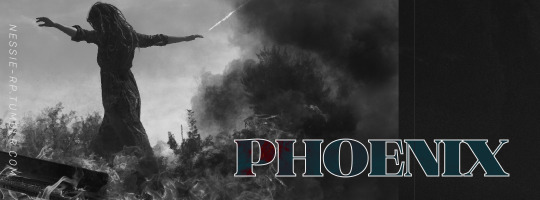
PHOENIX.
The phoenix, in its many forms and with its many names, is a spirit creature of which very little is known to the common person, even in supernatural spheres. Conflicting stories of their origins abound — that they are born when a falling star passes over the birth of only the purest of souls, that they existed before the earth was separated from the sea and will exist long after one reclaims the other, that the dragons breathed life into ash and from those ashes rose the first phoenix, and so on. None but the oldest phoenixes themselves know the truth of their origins, and even then it is rare that a phoenix will experience the memories of their first lives — rarer still for them to share such an intimate reminiscence.
Mythological touch points include: the Greek phoenix, Egyptian benu, East Asian fenghuang/hō-ō, Chinese Vermilion bird, Slavic firebird, Iranian huma and simurgh, Turkic konrul, Arabian anqa, the figure/iconography of Garuda in South/Southeast Asia, Chilean alicanto, Mayan Vucub-Caquix
HISTORY.
Mentions of a winged spiritual being with some mastery over life and death stretch back to 3000 BCE (see: Herodotus’ writings on Heliopolis, the then-capital of prehistoric Egypt). The ancient Egyptians even believed that the gods Atum and Re would occasionally take the form of a benu, a type of phoenix-creature.
This was not the last time a phoenix may have been worshipped as a god. Taking on an aspect of divinity allows for more influence over the moral leadership of a society, which is a phoenix’s ultimate goal.
It is said that phoenixes show themselves to mankind at important moments in history, but their reclusiveness in recent centuries has made such sightings scarce.
IN LYONESSE.
The phoenixes have no official position on the Hallowed Council, preferring to keep to themselves and work outside of politics. Their presence has been felt in Lyonesse for at least five hundred years, though it's likely they've been in and out of the city since shortly after its founding.
FACTS.
A common symbol of life, death, and rebirth, phoenixes are linked inextricably to this cycle. only under strict and often fatal conditions do they break it. They are among the most powerful, ancient, and secretive species of the supernatural world.
All phoenixes typically find a moral purpose to serve in their early lives, some kind of mission, and attempt to serve that purpose in all their subsequent lives. It is unknown whether phoenixes are compelled to choose a cause due to their nature or if their attempts to shepherd the mortal world come from a dictate of the first community of phoenixes. Many simply continue the cycle both because it has been so as long as the world can remember and as a way of coping with endless resurrection.
General characteristics of phoenixes include:
Reincarnation and pseudo-immortality.
While they are essentially the same being in each of their lives, the "mortal" lives that phoenixes live before awakenings affect their personalities, interpretations of the world, memories, and sense of purpose so they remain highly mutable beings. Phoenixes may not always take the same form in each of their incarnations. It’s common to find a phoenix that strongly resembles or evokes one of their past forms, but much more difficult for them to preserve their physical appearance exactly from life to life.
Phoenix births are extremely rare, as they can only be born from the union of two phoenixes.
Phoenixes age at a normal rate in each of their lives until the point at which their past lives reassert themselves, at which time aging slows or stops completely. They then then experience extended lifetimes of between 90 and 200 years, but remain mortal.
When phoenixes "die," their last breath is one of fire. Their mortal shells are consumed and their immortal soul, the firebird, seeks a suitable host to birth their next incarnation through a process of metempsychosis.
Absolutely adore sunlight.
Skeptical of reptilian creatures, including dragons.
Quite fond of greenery, very good at caring for plant life.
AWAKENING & AVIAN FORM.
Phoenixes reach a point in each life where their memories of their past lives resurface violently — this is the point at which phoenixes are the most vulnerable, as they experience breaks between reality and their memoryscapes and their other powers slowly reawaken. After their awakening, they have access to their avian form. These feathered creatures seem to be made of flame and plasma, though they are solid and interact as a normal living being would with the world. The fire of this form will only burn if that is the intention of the phoenix. Seeing a phoenix in their avian form can sometimes be interpreted as an omen of death.
When in this form, a phoenix leaves its human, corporeal, and mortal body behind, leaving itself vulnerable to attack as the absence of the spirit in the body would prevent them from acting to defend themselves. The bird rises from the body and can move without a tether; should the body die the avian form will not also be extinguished. This form is incredibly fast and strong, and has some control over natural energies, including heat, magic, and electricity.
ABILITIES.
ENERGY MANIPULATION. Even in their human forms, phoenixes have the power to control energy in various states, mainly through pyrokinesis, thermokinesis, and electrokinesis. Though phoenixes are not prone to using these abilities offensively, they can prove extremely powerful in a confrontation and are not to be underestimated. This ability is innate, but does not manifest until after the awakening in each life.
HEALING. Their tears have immense healing properties and are extremely sought after by magical healers. They also have innate touch-healing magicks, but the most potent healing ability comes from their tears. These healing abilities do not apply to their own injuries/ailments.
MEMORIES. Occasionally, when a phoenix encounters the same situations in different lifetimes, they'll get a very strong deja vu type feeling that may trigger flashes of that situation happening in the past and, occasionally, in the future. It is the only known instance of phoenix clairvoyance.
IMMUNITIES. Phoenixes are completely fireproof and impervious to mind-reading and glamours. They are also much more resistant to human diseases.
WEAKNESSES.
MORTALITY. A phoenix can be brought to a true death by another phoenix or if they die while submerged in water. The killing of a phoenix marks the murderer for the rest of their lives and beyond. Other deaths can come about by any means, but they will always trigger the rebirth as long as the fatal injury/sickness/etc. is persistent enough to overcome their healing abilities. Magical practitioners have tried to interfere with the life cycles of the phoenix before to catastrophic consequence.
MAGIC. They are highly susceptible to witchcraft in their humanoid forms. Phoenixes who are cursed in one life may carry the curse to their next life, depending on the strength and conditions of the curse (i.e. if the witch was trying to kill the phoenix, the curse would not continue past that first death). They have no way of knowing that they are cursed until their memories reassert themselves with the awakening.
CONTAINMENT. Their avian forms can be caged or held prisoner if confined within/with metal forged in either phoenix or dragon fire. The latter is much more common than the former, though still uncommon. If the avian form is kept away from the mortal body for too long, the mortal body will die but the creature will continue to exist, in a limbo of sorts within their reincarnation cycle until they are freed from the cage and able to seek out a new host.
DARK PHOENIXES.
Those phoenixes who fail to find a purpose, who do not make a positive change in the world, or who are more self-centered than selfless are said to have gone “dark.” Committing an act of true evil will also sully a phoenix, i.e. killing another phoenix, sexual assault, murder of an innocent, etc.
SPECIAL CHARACTERISTICS.
Burning contaminated firewood will result in atypical flame colors; similarly, the impurities in a dark phoenix's soul will be displayed in their avian forms as their coats will be striped with uncommon colors such as green, blue, and white.
Dark phoenixes undergo much harsher awakenings than their purer counterparts. Their memories are often much more intense and violent, therefore much more difficult to manage reliving. They are considerably weakened by their first few transitions into the avian form and may even be unable to access this form for a considerable amount of time after regaining their memories.
Dark phoenixes are volatile and very powerful, burning hotter than their counterparts in their avian forms. However, this means that they tend to have shorter lifespans because they “burn themselves out,” so to speak.
ORGANIZATION & SOCIETY.
Phoenixes do not tend to congregate or have any kind of species-wide organization. Due to their rarity, natural secrecy, and the unpredictable nature of their awakening, they are usually solitary.
Though they do not have a typical family structure but, on occasion, they can be mated to a member of another species and absorbed into their own group structure. If this is the case, they tend to gain more sociability and become less guarded because they have the added protection of a mate.
They strictly forbid writing down direct accounts of their lives, though there is no organization charged with enforcing this. Many suspect certain phoenixes have made this their moral duty, so as to preserve the balance, but no records of such a person/group exist, perhaps because they do their work efficiently.
INTERSPECIES RELATIONS.
Many phoenixes keep their identities secret from the world, masquerading as humans or witches. Reclusive by nature, the only species they generally mistrust are dragonkind.
Their feathers retain magical energies if removed, but it is considered bad luck to trade in phoenix feathers, no matter how powerful they can be for witches. Some groups consider them sacred. Phoenixes shed feathers naturally when in their avian form for long stretches.
To vampires, their blood tastes like ash and they smell faintly of burning carbon. However, it is a little-known fact that drinking the blood of a phoenix allows vampires to walk in the sun for a short period of time without facing any of its ill-effects.
MYTHS.
These things do not apply:
They have only an avian form. Through magic, they can access this bestial form, but they are born with human forms and the magical ability to flit between forms.
They rise from ashes. Would be cool.
Bathing in the blood of a phoenix can reverse the aging process. As yet uncomfired but likely untrue.
1 note
·
View note